The Polish manufacturer has introduced a new solution to the market to complement active studio monitors with a coaxial electro-acoustic transducer from the Norwegian SEAS, but it is also suitable for home use. The subwoofer in a closed-box (sealed) enclosures creates a 3-way system with the monitor, which works well with a traditional stereo. This solution provides excellent operating conditions for the coaxial transducer in a housing completely isolated from low tones. Audio Pro Solutions bass extender and 5 active monitors Coax create also a reference set for 5.1 sound with PC4uMusic configurations.
The manufacturer describes this very successful active monitor: COAX 2 is first and foremost – a point sound source, full control, naturalness, precise localization of vocals and instruments. It is a reliable device for the realization of sound in the near field. Coax 2 is an extreme precision, universal tool that significantly facilitates the work of experienced sound engineers. Two 100 W class AB amplifiers are responsible for driving the SEAS coaxial electromagnetic transducer.
Subwoofers use solutions to provide more low-frequency sound, but this comes at the cost of faithfully reproducing what was recorded in the recording. Acoustic suspension (air suspension, closed box, sealed box) is a method of loudspeaker cabinet design and utilisation that uses one or more loudspeaker drivers mounted in a sealed box or cabinet. Acoustic suspension systems reduce bass distortion that can be caused by stiff motor suspensions in conventional loudspeakers. Speaker cabinets with acoustic suspension can provide well-controlled bass response, especially in comparison with an equivalently-sized speaker enclosure that has a bass reflex port or vent. The bass vent boosts low-frequency output, but with the tradeoff of introducing phase delay and accuracy problems in reproducing transient signals. Sealed boxes are generally less efficient than a bass-reflex cabinet for the same low-frequency cut-off and cabinet volume, so a sealed-box speaker cabinet will need more electrical power to deliver the same amount of acoustic low-frequency bass output.
 The Art Of Sound Perfection is the motto of Scandinavian Electro Acoustic Systems, which dates back to the late 1920s at the Norwegian Institute of Technology and has remained in the forefront of European driver manufacturers for more than 60 years.
The Art Of Sound Perfection is the motto of Scandinavian Electro Acoustic Systems, which dates back to the late 1920s at the Norwegian Institute of Technology and has remained in the forefront of European driver manufacturers for more than 60 years.
According to experts' opinions: APS (Audio Pro Solutions) might not be a household name in the world of monitoring, yet for over a decade now the Polish speaker manufacturer have been making small but significant waves among the pro audio community. We’ve long since championed their products here at Funky Junk, and ever since the introduction of their widely acclaimed KLASIK monitors back in 2015 APS have built a reputation for building monitors that offer truly professional level performance at a very competitive price-point
Published March 2015 by Hugh Robjohns: Poland seems to be a hotbed of audio equipment production at the moment — I’ve lost count of how much new gear I’ve reviewed from Poland this year! Audio Pro Solutions (APS) were established in 2006 to build loudspeakers for both the hi-fi and pro-audio markets.
APS describes its new product: The bass multichannel extender of the Coax 2 studio monitor – as the
name suggests, it complements the Coax 2 active studio monitor in
reproducing low frequencies. The bass from the extender is fast,
dynamic, detailed, clean, transparent, and multi-channel.
 The manufacturer has already considered the use of active subwoofers and has to offer 10" (105 dB) and 12" (110 dB)
The manufacturer has already considered the use of active subwoofers and has to offer 10" (105 dB) and 12" (110 dB)
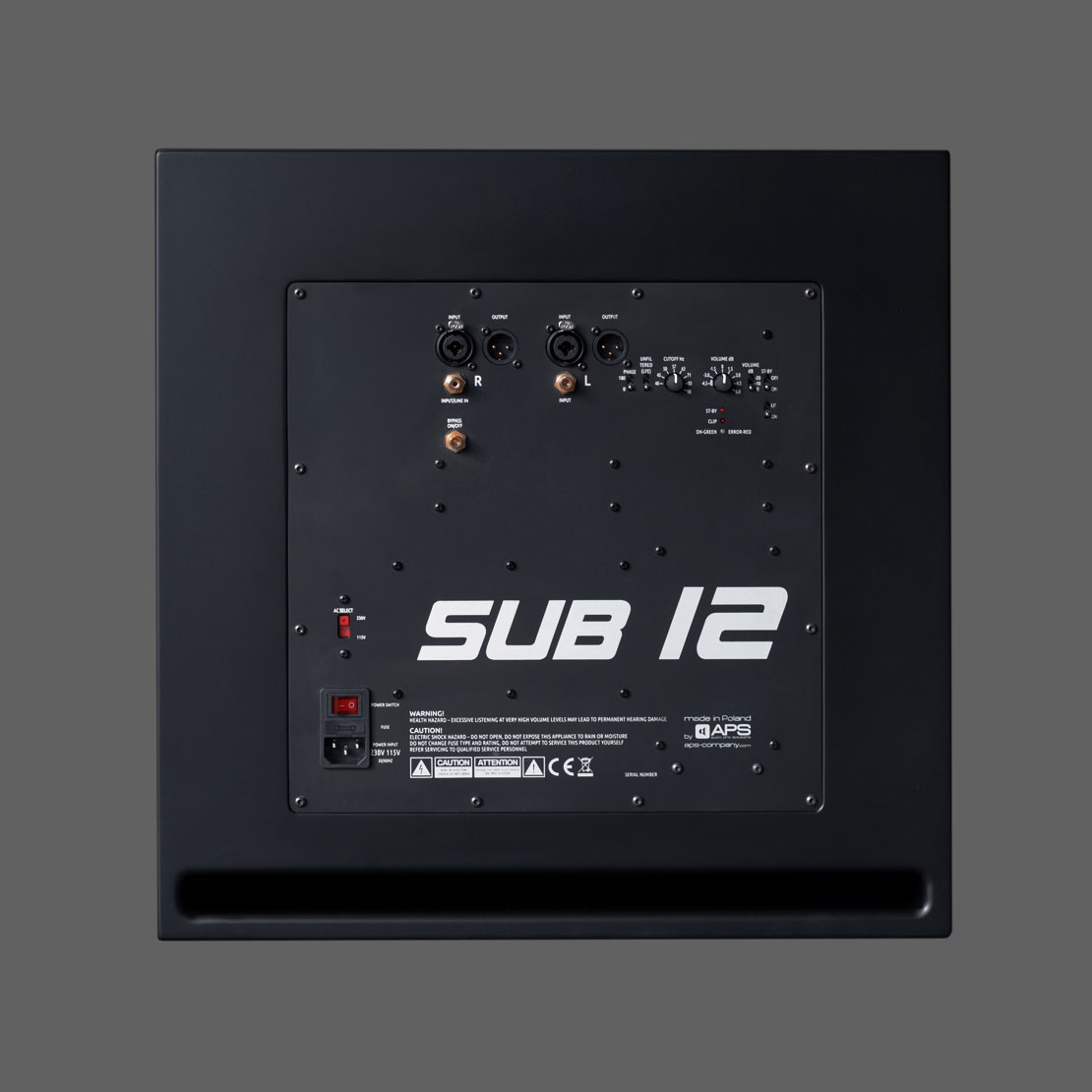
They are very powerful, but they do not have a Closed-box enclosures and and therefore are not as fast, dynamic and detailed.
A traditional stereo 3-way passive system in a closed-box enclosures with efficient low-frequency isolation was presented by another Polish manufacturer. UNITRA the Association of Polish consumer electronics manufacturers was established in 1961. Their new offer refers to the past in appearance, but the speakers and amplifier have modern solutions based on the best traditions.
There is a 75 liter loudspeaker enclosure with SEAS transducers for high and mid tones, and for low there are 2 from Poland.

To drive these passive speakers, they offer an amplifier, where you can choose the A or AB operating mode. The power amplifiers here are separated mono blocks.
However, passive crossover is not optimal. They need good quality
components for high power, which are very expensive and lose their
properties quite quickly. In practice, this means that they are not what
was purchased But it is possible to connect bi-aimp in this Unitra speakers to provide even stronger drive of these 2 STX transducers for low tones. The Unitra amplifier can be used in class A for SEAS and the additional amplifier in class AB for STX.
But it is possible to connect bi-aimp in this Unitra speakers to provide even stronger drive of these 2 STX transducers for low tones. The Unitra amplifier can be used in class A for SEAS and the additional amplifier in class AB for STX.
Unitra fans can look for contemporary Edward tube amplifiers
Only one Unitra speaker can be used for both center and sub signals in a 5.1 system. Theoretically, one mono block in the Unitra amplifier can be set to work in A mode for SEAS converters, and the other in AB for Polish STX.

The system can be supplemented with 4 STX loudspeakers, which have a closed enclosure and need to be driven with appropriate amplifiers. However, you cannot buy one Unitra speaker, and STX does not have an equivalent.
The APS set for 5.1 is easier to set up in the apartment, but both need to be configured in a PC to properly play music.
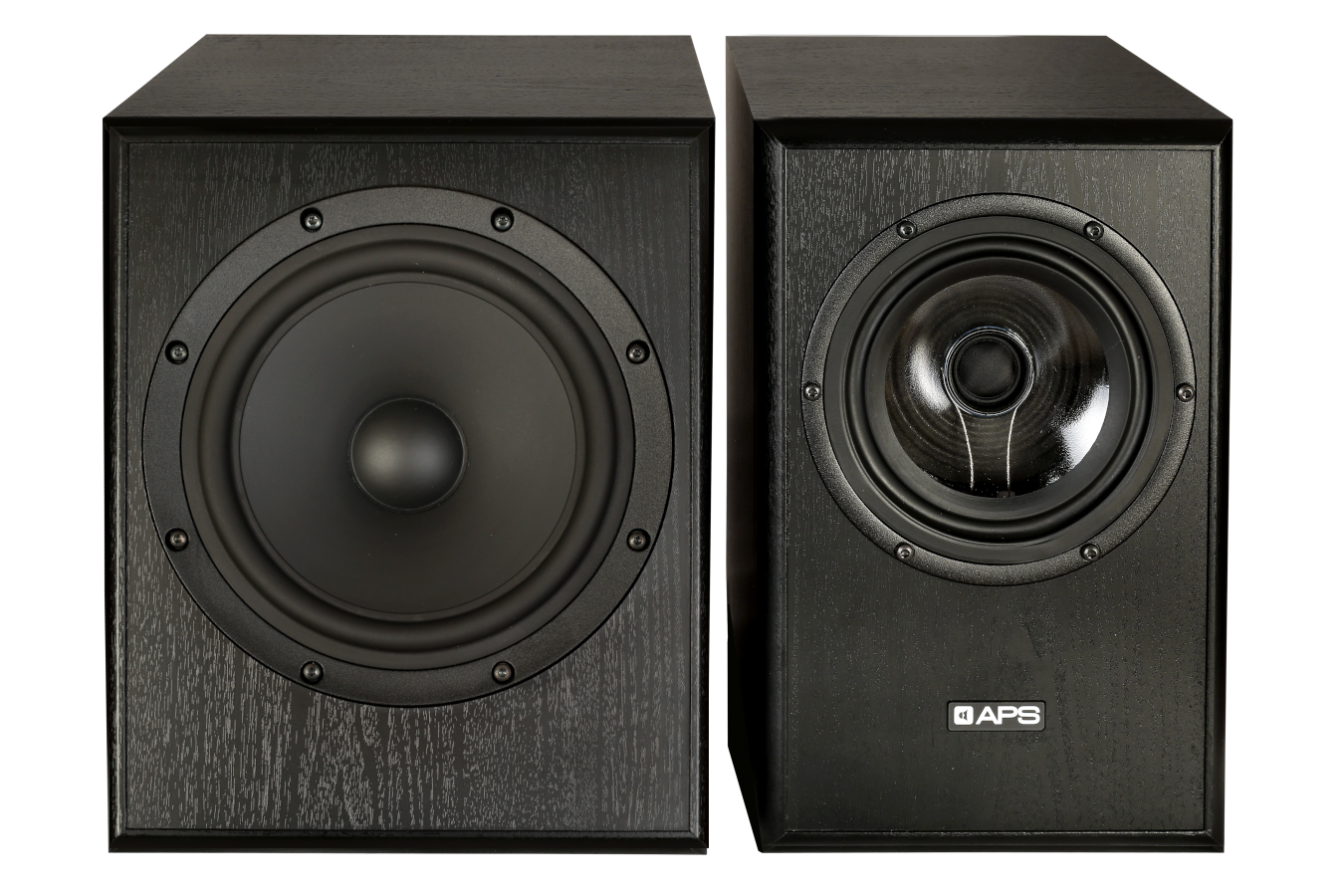



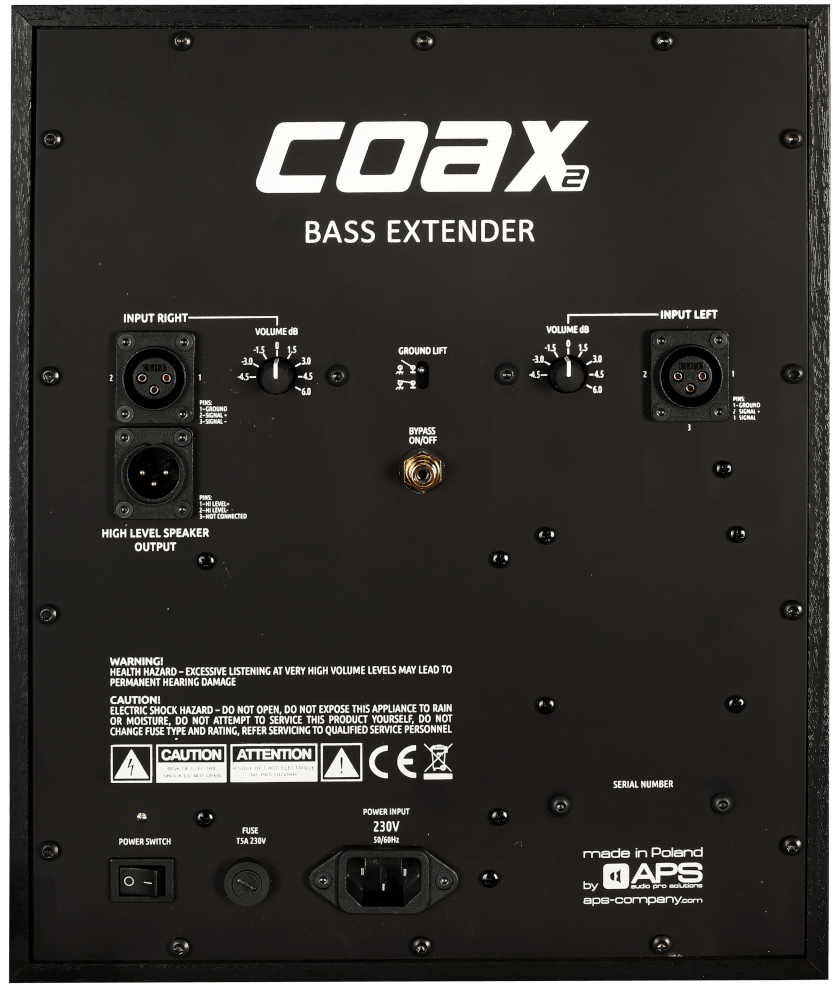

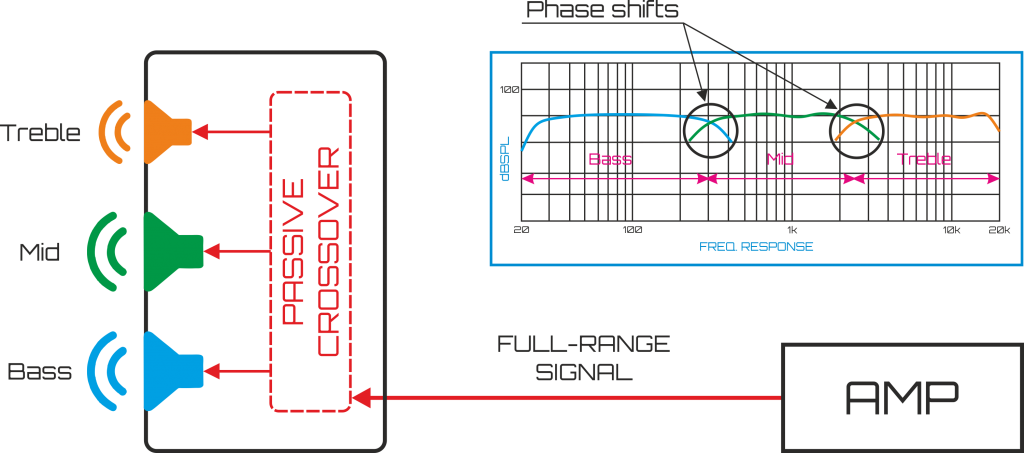
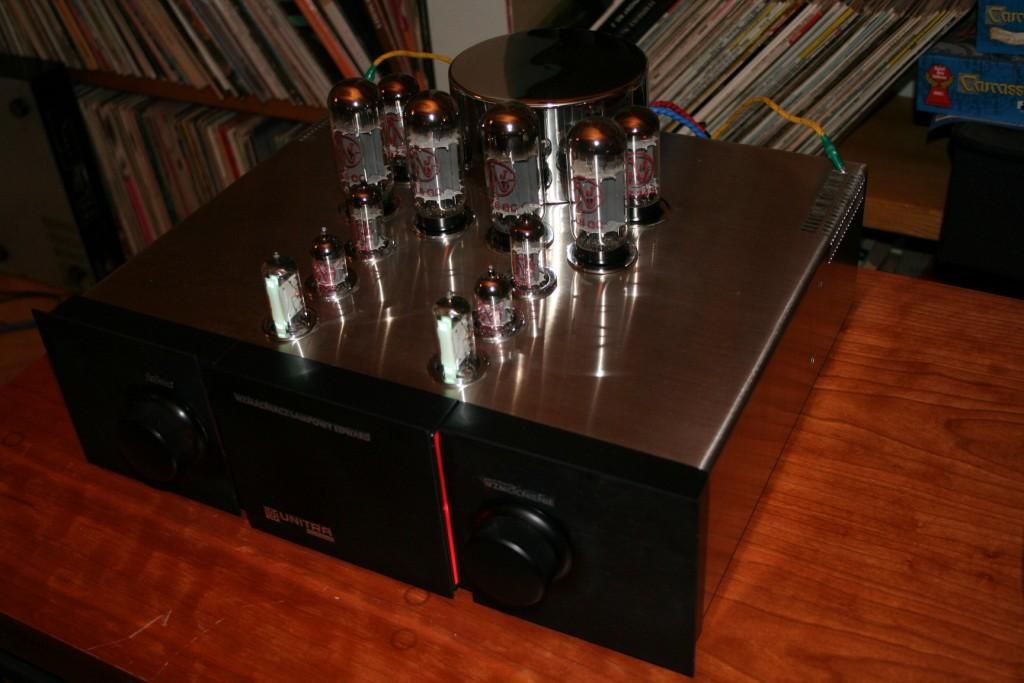


The loudspeaker driver's moving mass and compliance (slackness or reciprocal stiffness of the suspension) determines the driver's resonance frequency (Fs). In combination with the damping properties of the system (both mechanical and electrical) all these factors affect the low-frequency response of sealed-box systems. The response of closed-box loudspeaker systems has been extensively studied by Small] and Benson, amongst many others. Output falls below the system's resonance frequency (Fc), defined as the frequency of peak impedance. In a closed-box loudspeaker, the air inside the box acts as a spring, returning the cone to the 'zero' position in the absence of a signal. A significant increase in the effective volume of a closed-box loudspeaker can be achieved by a filling of fibrous material, typically fiberglass, bonded acetate fiber (BAF) or long-fiber wool. The effective volume increase can be as much as 40% and is due primarily to a reduction in the speed of sound propagation through the filler material as compared to air. The enclosure or driver must have a small leak so that the internal and external pressures can equalise over time, to compensate for changes in barometric pressure or altitude; the porous nature of paper cones, or an imperfectly sealed enclosure, is normally sufficient to provide this slow pressure equalisation.
ReplyDeletehttps://en.wikipedia.org/wiki/Loudspeaker_enclosure
Acoustic suspension or air suspension is a variation of the closed-box enclosure, using a box size that exploits the almost linear air spring resulting in a −3 dB low-frequency cut-off point of 30–40 Hz from a box of only one to two cubic feet or so.[16] The "spring" suspension that restores the cone to a neutral position is a combination of an exceptionally compliant (soft) woofer suspension, and the air inside the enclosure. At frequencies below system resonance, the air pressure caused by the cone motion is the dominant force. Developed by Edgar Villchur in 1954, this technique was used in the very successful Acoustic Research line of "bookshelf" speakers in the 1960s–70s. The acoustic suspension principle takes advantage of this relatively linear spring. The enhanced suspension linearity of this type of system is an advantage. For a specific driver, an optimal acoustic suspension cabinet will be smaller than a bass reflex, but the bass reflex cabinet will have a lower −3 dB point. The voltage sensitivity above the tuning frequency remains a function of the driver, and not of the cabinet design.
Delete